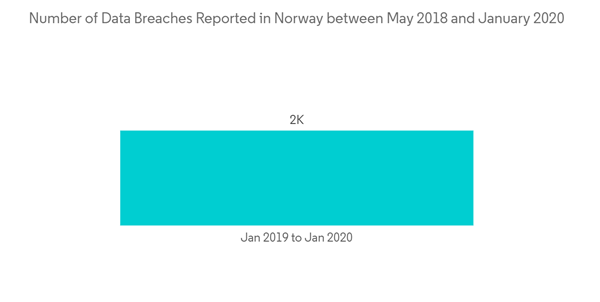Norwegian and international companies are increasingly dependent on available data and functioning networks to be able to carry out their activities. Managers and top executives can no longer afford to ignore cyber risk, which in its broadest form can be defined as any risk related to information technology.
Norway is one of the leading digital nations in the world. The digitalization of Norwegian society also represents a challenge. Digital infrastructure and systems are becoming increasingly complex, comprehensive, and integrated. Dependencies and vulnerabilities are progressively emerging across areas of responsibility, sectors, and nations, and it is generally expected that digital services should be accessible anywhere and all times. Successful digitalization also includes making sure that the solutions provided appropriately accommodate demands for the security and privacy of the individual, and that everyone can be confident that the digital services will function as they should.
Cyber insurance pricing generally increased in Norway, while insurers limited their appetite for these risks. Ransomware continued to be a primary concern, with insurers typically restricting coverage and limiting their exposure to these claims. More than ever, insurers are expected to display a sound cybersecurity strategy to be considered insurable and to receive the best available terms and conditions.
Key Market Trends
The General Data Protection Regulation (GDPR)
GDPR is an EU regulation, it will have direct applicability and direct effect in all EU member states. Norway, however, is not an EU member state but a member of the European Economic Area (EEA) and a different procedure, therefore, applies before the GDPR can become part of Norwegian law. Norway, in fact, already has some sector-specific data protection rules. The Personal Data Act and its regulations have 'inter alia’ specific rules which limit an employer's access to its employees' e-mail and other electronic workspaces, rules on video surveillance, and rules on the processing of personal data by credit information services. In the health sector, Norway has several statutes which have data protection implications such as the Personal Health Data Filing System Act and the Health Research Act.GDPR fines were found to be insurable in only two countries, Norway, and Finland, out of the 30 European countries. The EU's Privacy Regulation (GDPR) places greater demands on understanding the company's risk exposure in this area and will significantly increase the economic consequences of cyber-attacks for all companies.
Increase in Digitalization Leads to Rising Cybercrimes
96% of all Norwegian are online, more than 90% embrace new technology, and 6 of 10 feel capable of judging what is safe to do online. Still, cyber-crime costs Norway approximately NKR 19 billion annually. At the same time, 73.9% argue that the Internet will not be safer even if their personal computer is secure. It is found that most Norwegians accepts that their online activities may be monitored by the authorities. But less than half the population believe the Police can help them if they are subject to cybercrime, and 4 of 10 sees cyber activists play a role in the fight against cybercrime and cyberwar. 44% of the participants in this study say that they have refrained from using an online service after they have learned about threats or security incidents. This should influence digitalization policy.Norway is the 5th most digitized country in the world and thus has the potential to gain 24MNOK2 per year because of a 10% increase in digitalization. At the same time, cybercrime costs Norwegian society large sums every year. Digitalization has the potential to create economic growth and welfare through national and global trade, and more efficient public services. However, this potential is nearly eliminated because of an increased level of cybercrime. When adding the fact that foreign powers are stealing Norwegian technology research and development, the very thing our future generation will base their economy on, it is important to safeguard and protect national ability to freely utilize the tremendous power that lies in digitalization.
Cybersecurity software is programs that monitor user behavior or know threat activities, and that enforce technical security controls on the behalf of the user. Most are familiar with anti-virus and firewalls, but numerous other programs can aid the user towards a more secure online experience. Hence, companies need to have cyber insurance in Norway.
Competitive Landscape
The report provides an analysis of major cyber liability insurance providers in the market. The players have adopted various growth strategies, such as partnerships, agreements and collaborations, new product launches and product enhancements, and acquisitions to expand their footprint in the Norway cyber insurance market. For example, AGCS and Munich Re have jointly developed a commercial cyber risk insurance solution called “Cloud Protection +.” Some of the major players in the Norway Cyber (Liability) Insurance market are Aon Plc., American International Group, Inc. (AIG), AXA XL, Allianz Group, Chubb Limited, NHO Insurance, Zurich Insurance Group, Cisco Insurance, Marsh and others.Additional Benefits:
- The market estimate (ME) sheet in Excel format
- 3 months of analyst support
This product will be delivered within 2 business days.
Table of Contents
Companies Mentioned (Partial List)
A selection of companies mentioned in this report includes, but is not limited to:
- Aon Plc.
- American International Group, Inc. (AIG)
- AXA XL
- Allianz Group
- Chubb Limited
- NHO Insurance
- Zurich Insurance Group
- Cisco Insurance
- Marsh*









